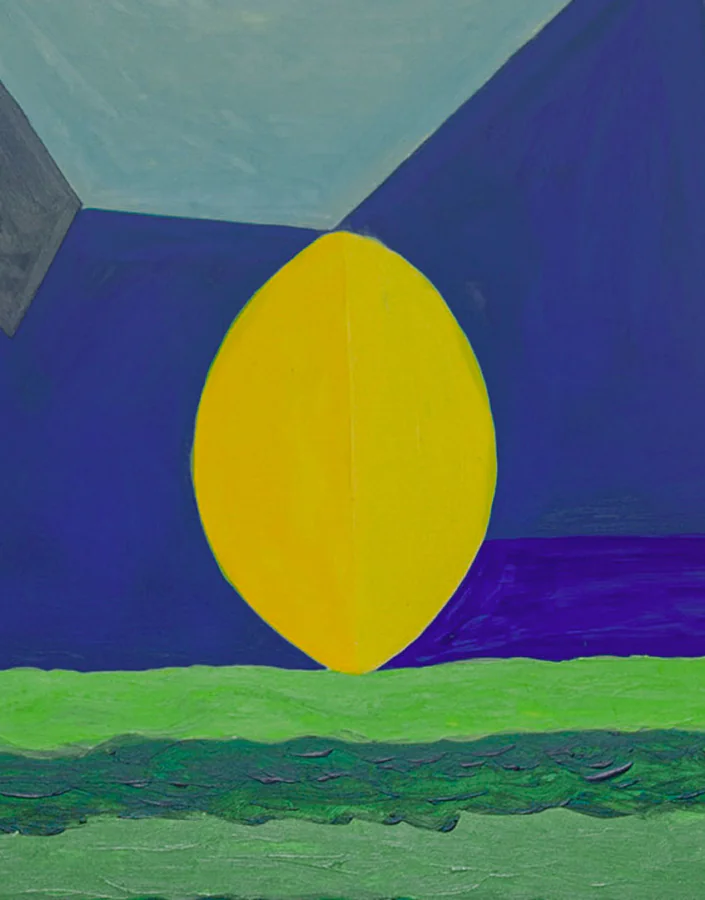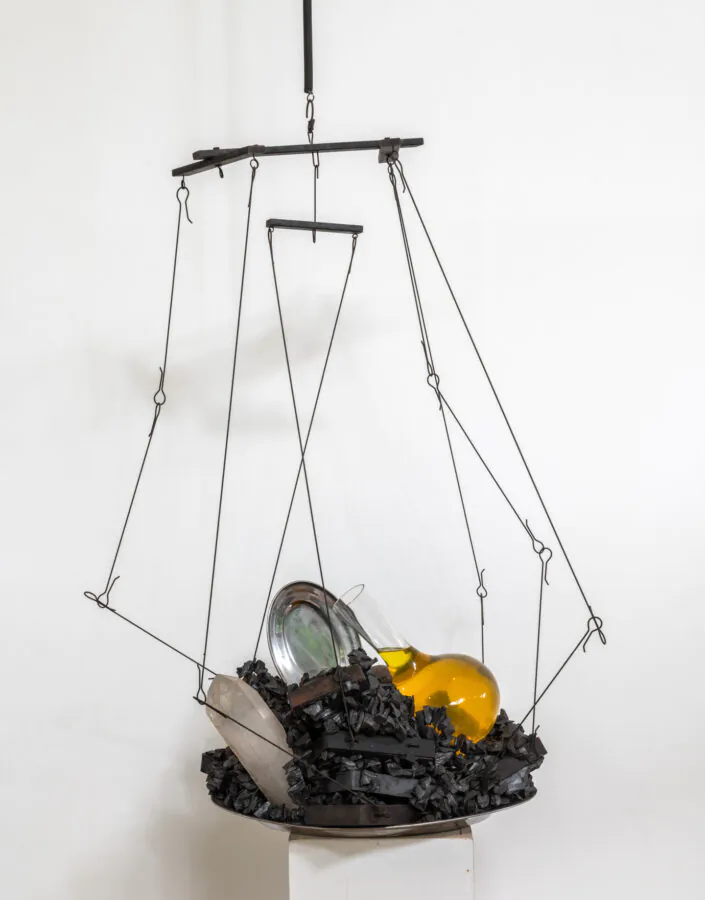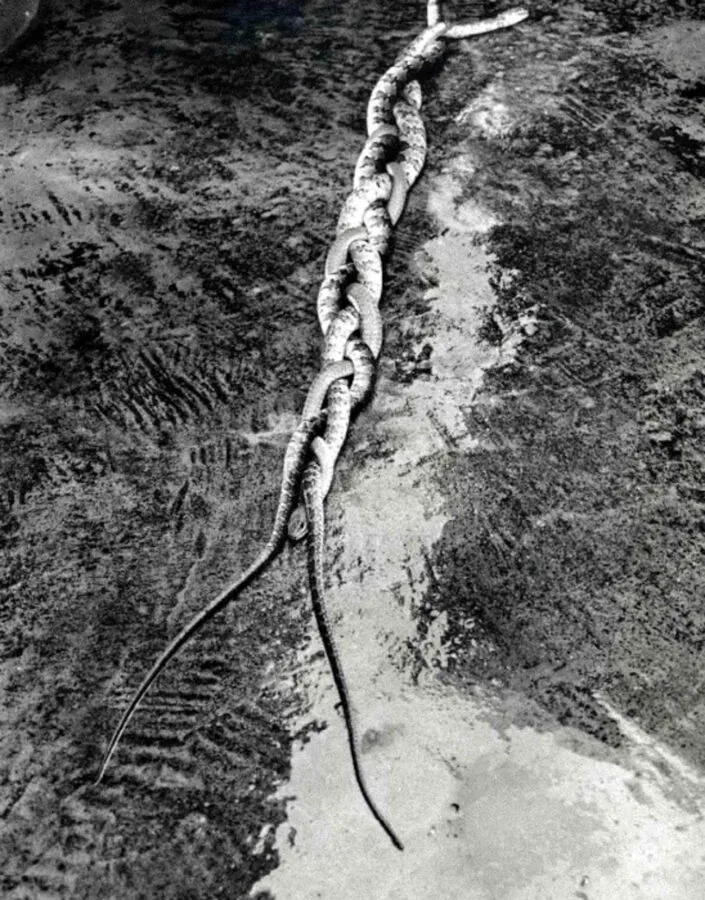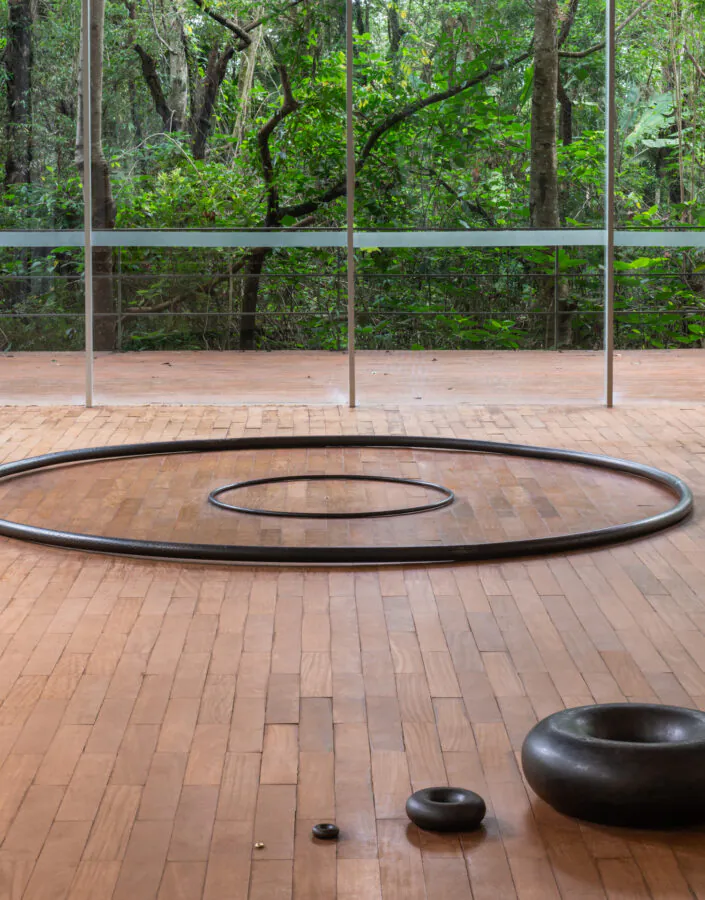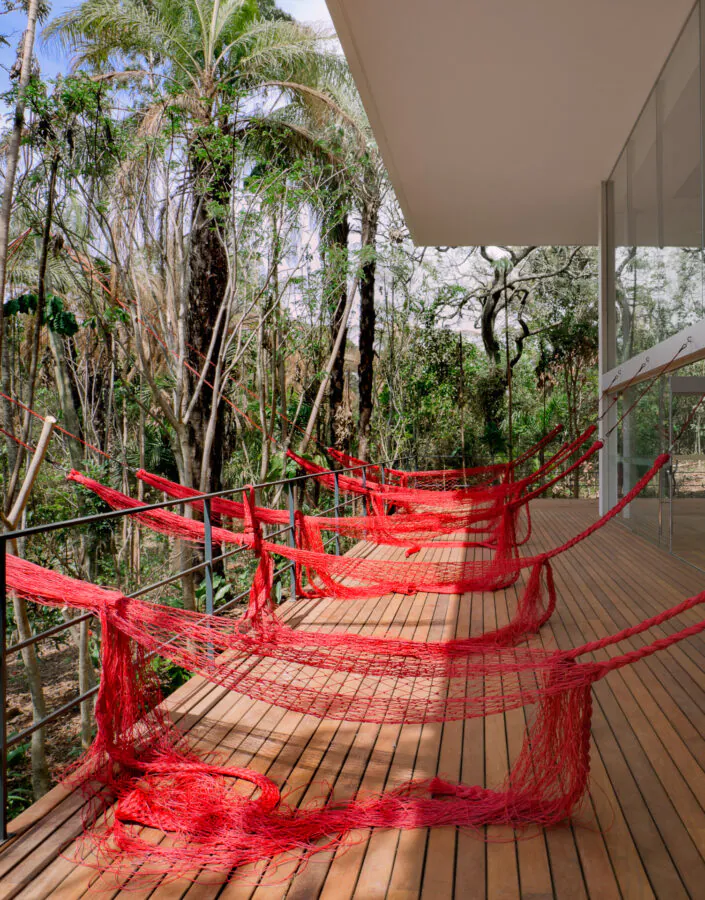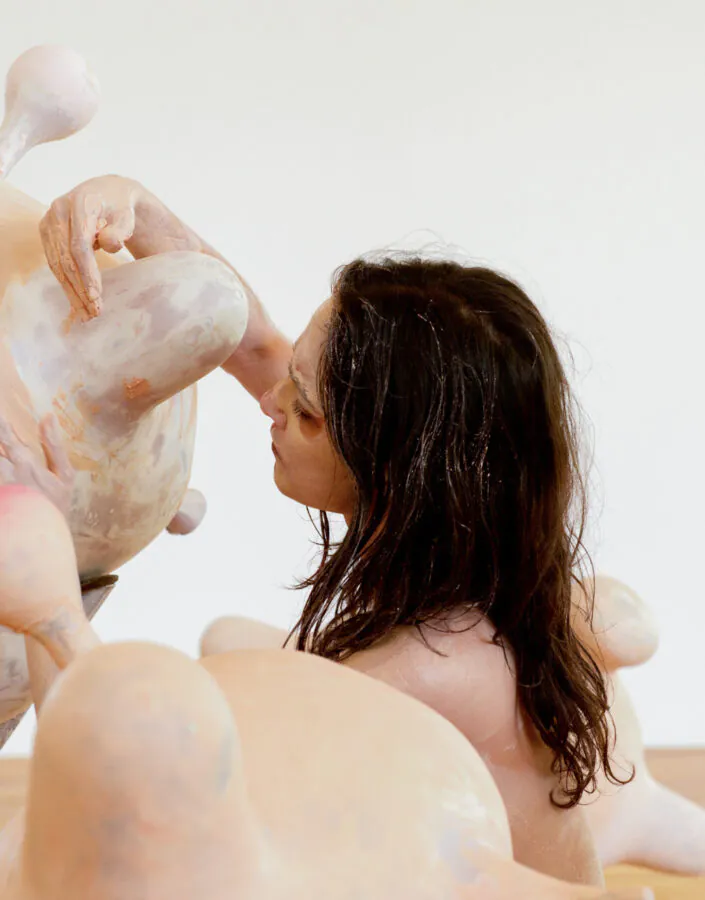À la Lumière des Deux Mondes
2005
Bronze fundido, cabo de aço, aço laminado, ferro, banho de ouro, resina


A obra À la Lumière des Deux Mondes (2005) foi exposta pela primeira vez no Musée du Louvre (França), em ocasião de uma grande exposição dedicada à representação do Brasil no século 17, pelo pintor holandês Frans Post (1612-1680). Um aspecto marcante na obra de Post é a expressiva luz que foi atribuída como uma singularidade do Novo Mundo (América) em contraposição com a do Velho Mundo (Europa). Com o título (À Luz de Dois Mundos, em português), Tunga faz referência também à luz, mas em seu sentido simbólico, como ideias e pensamentos que entraram em choque com a aproximação desses dois mundos.
No trabalho vemos, de um lado, caveiras penduradas e de outro, no chão, uma série de cabeças de personalidades marcantes da cultura ocidental. Os rostos desses pensadores estão emaranhados pelo “tipiti”, tipo de espremedor manual de origem indígena utilizado no preparo da farinha de mandioca. A sensação é que o conhecimento europeu está sendo absorvido pelo esqueleto deitado na rede, em alusão à antropofagia presente no imaginário americano.


